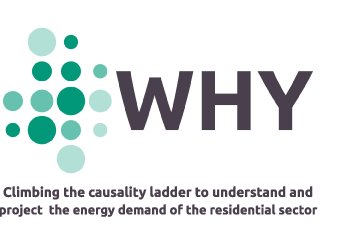Deliverable 3.1 Technical Documentation of the WHY Toolkit
Executive Summary
This deliverable contains the definition of the WHY Model Architecture. The architecture is described by Code-Elements, a collection of models and modules designated to perform a certain task within the WHY Model Architecture. Code-elements are linked by Interfaces.
Each Interface is described by their corresponding data format and the data they will contain. Lastly the architecture contains Components, which are the key parts that make up the Code-Elements and are either Models, Data or Algorithms performing different
tasks in the project.
The WHY Model Architecture presented in this Deliverable is a preliminary version that will be developed further in the course of the project when the different elements will be developed. This preliminary version was developed to provide first insights into the inner
workings of the WHY Toolkit. Fig. 1 shows a simplified version of the architecture with only the Code-Elements considered. Between each of the Code-Elements is an Interface which provides the required data in the necessary format. The Components setting up the different Code-Elements are mentioned in the list below. A detailed description can be found in the corresponding section of the Deliverable.
Causal Model:
Environment Data:
- Climate Data projections
- Exogenous Data projections
- Legal and interventions
- Grid Data
- Geographic Data
Behavioural Models:
- Data on energy use classes
- Energy behaviour classifier Model
- Investment decision Model
- Energy needs model
- Thermal needs model
- Transport needs model
Non-controllable Renewable Energy:
- Energy Generation Model
Building Scaling:
- Investment Effects Model
- Technology Data
Upscale:
- Upscale Algorithm
Others:
- Sustainability Assessment Model
- Intervention Optimizer
LPG Tr-Version:
- Transport Data
- Transport needs model
LPG El-Version:
- Energy Generator Models
- Non-Controllable Appliance Models
- Multi Agent System Model
LPG Th-Version
Building Data and Model
- Thermal Model
- Electrical Data
House Infrastructure Simulation:
- Stationary Energy Storage Models: Batteries
- Movable Energy Storage Models: EV
- Power2Gas Models
- Transport Energy Models
- Controllable Appliances Models
- Energy Management System Model
PRIMES, PROMETHEUS, TIMES:
- Energy System Models




